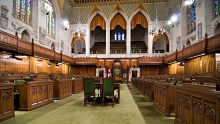
It is becoming more likely that the upcoming federal budget will treat Canadians to a higher contribution limit for tax-free savings accounts (TFSA).
Media reports are citing a confidential letter by Finance Minister Joe Oliver to the Conservative caucus, where he indicates the government will keep its 2011 election promise to double the TFSA limit. The maximum contribution is currently $5,500 though it was $5,000 when the 2011 election pledge was made.
In a federal election year when the government will want to follow through on promises, this news is not surprising but it is welcome, says Jamie Golombek, managing director of tax and estate planning with CIBC in Toronto.
“From a fundamental principle perspective, the more the government can do to encourage Canadians to save for their own retirement, the better we are as a society,” he says.
There has been some recent debate over the usefulness of the TFSA in helping Canadians of all ages and incomes save for their financial futures.
Research by the Department of Finance indicates that TFSAs are most popular with seniors as opposed to younger Canadians who would benefit from extra saving.
In 2011, approximately 40% of individuals between the ages of 65 and 71 held TFSAs, according to the department’s 2012 research. Instead, less than 25% of young Canadians between the ages of 18 and 24 had these accounts in 2011 and less than 30% of adults between 25 and 49 participated in TFSAs.
While it is understandable that younger adults buying their first home or paying off a mortgage may not be thinking about long-term saving, says Golombek, advisors can reframe the TFSA conversation so this type of account is more appealing to those clients.
He suggests advisors get their clients thinking of the TFSA as an emergency fund.
“If you have that home and the roof leaks or you need a new furnace, it’s a great way to save extra money on a tax-free basis for any type of emergency,” says Golombek.
Also, it is a good idea for advisors and clients to take a balanced approach to the financial plan. With lower interest rates, it may be beneficial for clients to worry less about aggressively paying down debt and focus more on saving through tools like the TFSA or the registered retirement savings plan, according to Golombek.
There has also been some concern regarding whether increased contribution limits will solely benefit wealthier Canadians with higher incomes. This comes with the publication of a report from the Office of the Parliamentary Budget Office (PBO) in February.
“PBO estimates that higher wealth households will be able to continue contributions, but TFSA contribution room limits will soon exceed the financial asset base for most low- to middle-wealth households,” states the report. “Continued growth in individual limits offers no additional benefit for these groups.”
Golombek agrees that higher-income Canadians are likely to take advantage of the TFSAs but does not believe the opportunity for increased savings should be taken away from everyone. The current design of the program encourages lower-income individuals who may be receiving government assistance to save for retirement, he says.
“When they take money out of the TFSA, the money is not considered to be income and then doesn’t negatively impact government income-tested benefits, [such as] the guaranteed income supplement, which is clawed back based on income,” Golombek explains.